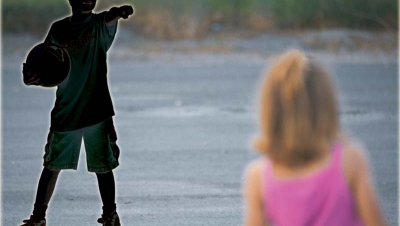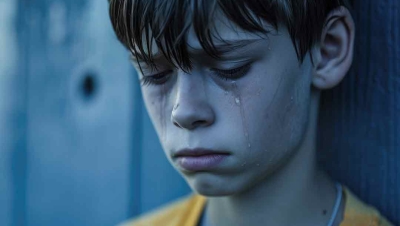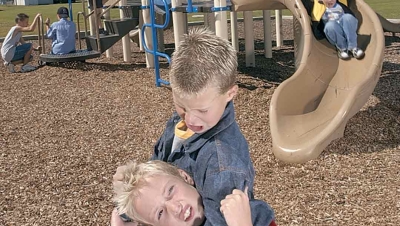For starters, know the warning signs
Award-winning actor Sir Anthony Hopkins describes himself as once being an antisocial child who did not want to interact with other children. He disliked school and grappled with why he had to attend at all. Hopkins described himself as a misfit and a moron. He says he did not make good grades, and it was only later in life that he learned he had dyslexia.
While attending the YMCA at age 17, Hopkins joined a drama club, and his life changed. He found meaning in acting and went on to win a scholarship to the prestigious Royal Academy of Dramatic Art in London. Following graduation, he was selected for the National Theatre and went on to become one of the most renowned stage and screen actors of our time.
Why, we might ask ourselves, does one child who struggles to fit in become a famous actor while another becomes a bank robber? Why does one child become an ambassador while another becomes an embezzler? Or a child abuser? Or a mass murderer?
As school and childcare workers, it is natural to wonder what will become of our charges, especially those whose behaviors cause grave concern.
The American Academy of Child and Adolescent Psychiatry reports that at any given time between 7 and 12 million children in America today have diagnosable developmental, behavioral, or mental health disorders. The majority of these children grow up to develop adequate coping skills which enable them to lead quality lives.
"It would be easy to believe," says Frank Pittman, an internationally known Atlanta psychiatrist who specializes in family therapy, "that the bullies are the ones whose futures are the bleakest. Yet, when you watch them on the playground, you see that they are not the children who are ostracized by their peers. On the contrary, they are active and involved, and they may be the ones demonstrating leadership.
"What we fail to remember," continues Pittman, "is that children require a certain amount of violent play. Roughhousing, wrestling, tussling, sports competition - aggression is intrinsic in our biology. It is part of our human nature.
"Where parents, teachers, and care workers go awry is in their inability to help children understand the naturalness of anger. Many adults are not comfortable with strong emotions in themselves, and, as a result, they teach children to be afraid of them, too. They teach children to minimize their feelings by saying such things as. 'It's not that bad. Quit overreacting.' Or they teach children to doubt or discount their feelings altogether by countering, 'You're just saying that; you really don't feel that way.'
"This is how children become dangerous," Pittman goes on to say. "If they can't safely acknowledge their strong feelings, learn how to act and not act on them, and find acceptance in being who they are, they don't learn honesty. This is where their interpersonal crisis develops."
Pittman spontaneously adds, "If teachers and caregivers want to know which children need professional help, watch them on the playground. The peer group will show you that information. Look at the ones they ostracize - the wimps or weirdos - those are the ones you need to pay attention to."
Working with the Federal Bureau of Investigation (FBI) and Secret Service in researching threat assessment and predictors of school violence, the National Association of School Psychologists (NASP) found that there is no specific set of indicators that point to a child's becoming a perpetrator. However, data suggests that about 90 percent of mass murderers are male, and with some exceptions, such as school shooters, are between 25 and 35 years old.
Their profiles reveal that they are socially isolated, clinically depressed, and paranoid. Their delusional belief system tells them that the world is against them and that they are victims. Because they are right, they must avenge the injustices against them.
The NASP website is a helpful resource for developing strategies to identify troubled children and to establish procedures that might address their individual needs while also preventing school violence. Two resource articles found on the site includes the FBI's Four-Pronged Assessment Model which reminds childcare workers and teachers to be diligent in their actions with potential perpetrators while trying to see the world through that child's eyes. The model gives step-by-step instructions for examining the child's:
- Behavior characteristics
- Personality traits
- School dynamics
- Social dynamics
- Family dynamics
The website includes information on the types of threats and risk levels a facility can find itself facing, and it also recommends:
- Establishing a clear-cut policy that is understood and accepted in all facilities
- Creating and training an interdisciplinary assessment team
- Building a climate of trust between students and staff
The site also includes suggestions for programs that can be implemented to help children improve behavior schoolwide and to create an environment of safety.
Neuroscientists and biologists continue to address the question: Why does one child become a perpetrator and another does not? The answer remains elusive. All acknowledge that genetics and biology play a role, but they are not the sole reason. There is little teachers and childcare workers can do to change what nature gives out. However, psychological, psycho-educational, or neuropsychological testing may be helpful in determining where problems exist and in helping adults understand how a child views themself in the world.
Accurate diagnosing is significant because several mental disorders of childhood resemble each other in behaviors but originate from different physiologic or emotional sources. For instance, generalized anxiety disorder and attention deficit disorder may appear similar in behaviors; e.g., hyperactivity, poor focus, and difficulty with social relationships, but their causes and treatments differ. Similarly, a child could have more than one problem, e.g., attention deficit disorder and generalized anxiety disorder, and their treatment program needs to address both problems.
With the correct information, professionals and parents can design interventions which aim to improve academic and social success.
Taking into account genetic differences, mental health researchers and sociologists warn that our culture, which glorifies violence as a means of achieving recognition and fame, is harmful. They add that dishonesty and illicit behavior in front of children counters moral development, and our mobile society prevents children from feeling rooted. These academics suggest that childcare professionals use creative ideas to teach children how to make compassionate ethical decisions, which give all a sense of acceptance.
Pittman, whose forte includes lecturing with movie clips, concludes by advocating that those who help children remember that both their wisdom and their ability to demonstrate what appropriate adulthood looks like is important, "Our society is abounding with narcissistic people. who can't see when they are doing anything wrong. they are insensitive to anyone's feelings but their own. They may feel like victims as if everyone else is supposed to be an adult and take care of them, while they take no responsibility for their own actions."





